Michael Jantzen is an artist, inventor and designer who explores the art of architecture. Many of Jantzen’s works are influenced by nature, technology, science, and electronic music. His art integrates environmental architecture and technology to create a fresh and exciting experience. Every new work of art is designed with extreme innovation at the forefront. His innovations are based on the re-invention of the surrounding environment using photography.
One of Jantzen’s most acclaimed proposals, the Stair-Scape Cubes, meant for a public park, began in 2012. The Stair-Scape Cubes are large public art structures made of steel that are built to inspire individuals to come together and exercise by ascending the stairs that weave between the giant support grids. The piece was designed with a key feature of interactivity that also generated electricity for the local communities as people climbed the stairs. The piezoelectric effect of the stairs was produced every time pressure was applied to a step. A limited amount of power would be sent to the local grid, supplying sustainable energy for surrounding residents. The modular, prefabricated sculptures were made in various shapes and sizes, and their simple nature makes an enjoyable interactive public playground for people to exercise and help fight obesity. The Stair-Scape Cubes were designed to become suitable venues for special occasions and sporting competitions.
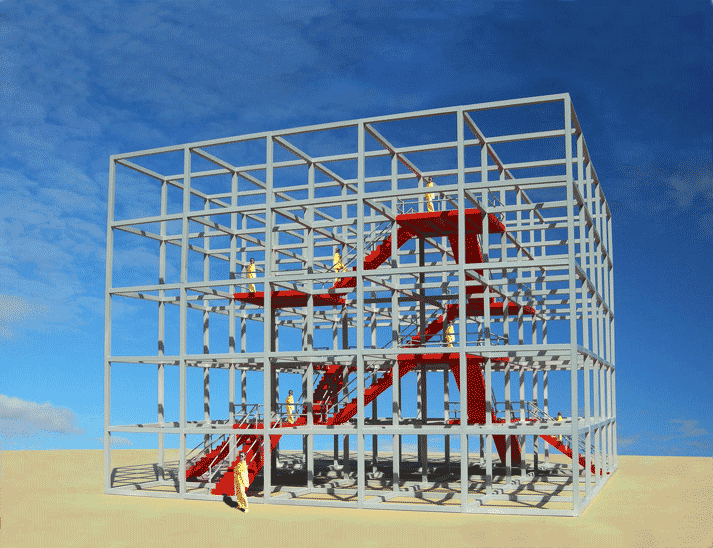
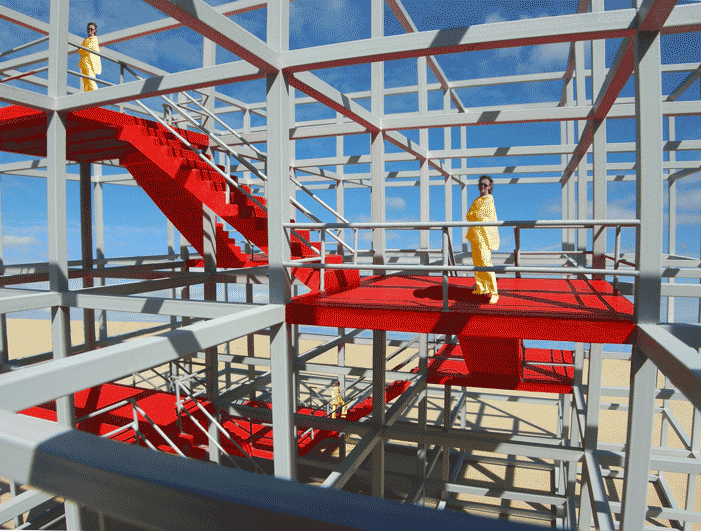
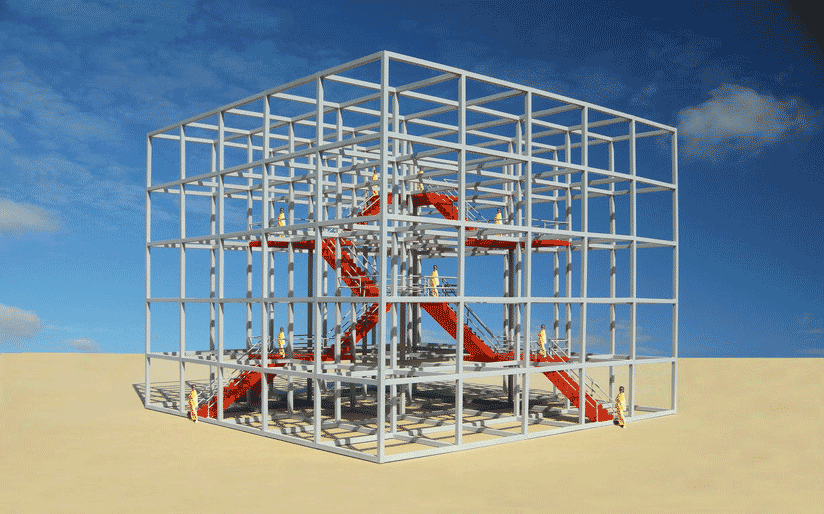
Jantzen’s Sounds of the Sun Pavillion is a conceptual proposal for a large installation made up of several thin, prefabricated, curved steel tube elements. These components are fused together to form thirteen board interwoven elements. Each side of the large curved square is covered with flexible solar cells. The cells produce electrical power and track the light propagation as it influences the various surfaces of the pavilion. The excess energy generated by the solar cells is used to power the community in which the pavilion is located. The architecture of the pavilion allows for a dynamic surface area that is synchronous to the shifting direction of the sun, enabling the light to travel over the pavilion throughout the day and optimize positioning. This project blurs the lines between art and architecture, exploring the aesthetics of shadows. It creates the appearance of shadow even when the sun is not shining, and when it is shining, the structure and the shadows combine in such a way that the Pavilion seems to be increasing in size.
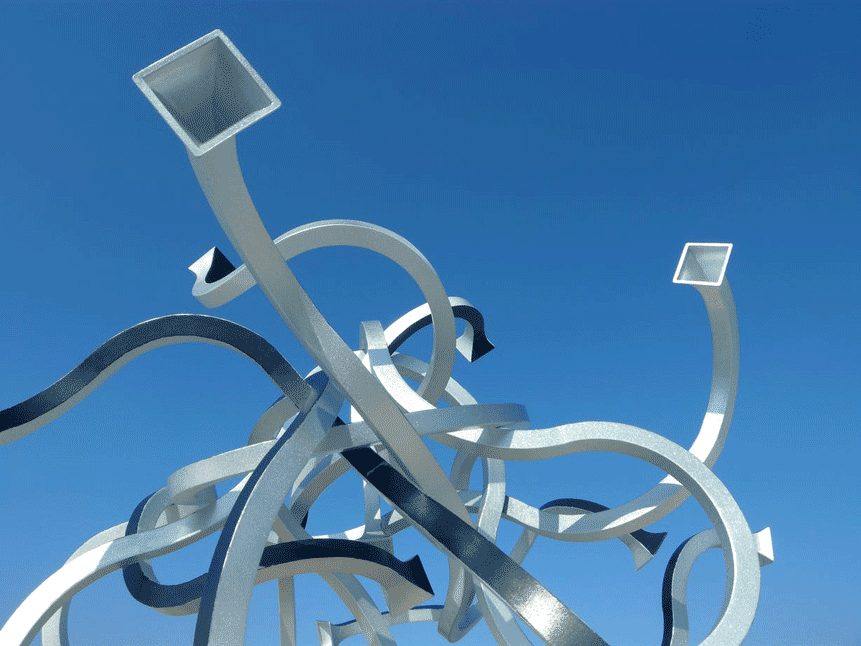
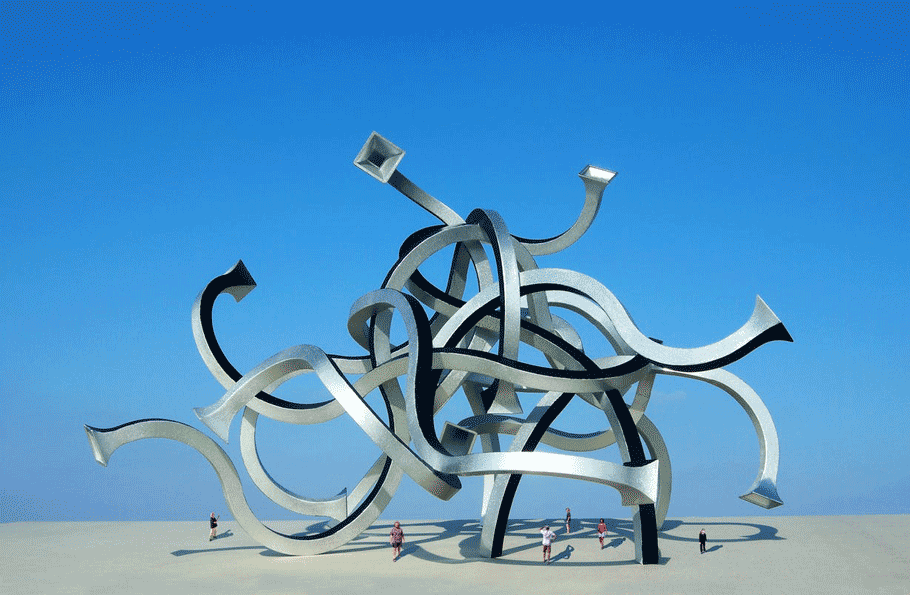
The intriguing installation design The Pandemic Isolation House by Jantzen was established around an architectural aesthetic that incorporates the diverse needs and desires of the people who inhabit the structure. It resembles a remote refuge in an undisclosed location. Designed during the onset of the COVID-19 pandemic, Jantzen’s effective structure allows for isolation in a safe manner. The Pandemic Isolation House features a large swimming pool that encircles the entire house, creating a kind of moat that discourages unwelcome visitors from approaching the main house. A collection of solar cell panels are installed above the deck to power the house and capture rain from the roof to store under the house. The collected rainfall is used for the pool and to supply the needs of the house. Jantzen’s unique architecture enables an innovative approach to isolation homes that protects individuals while being sustainable at the same time.
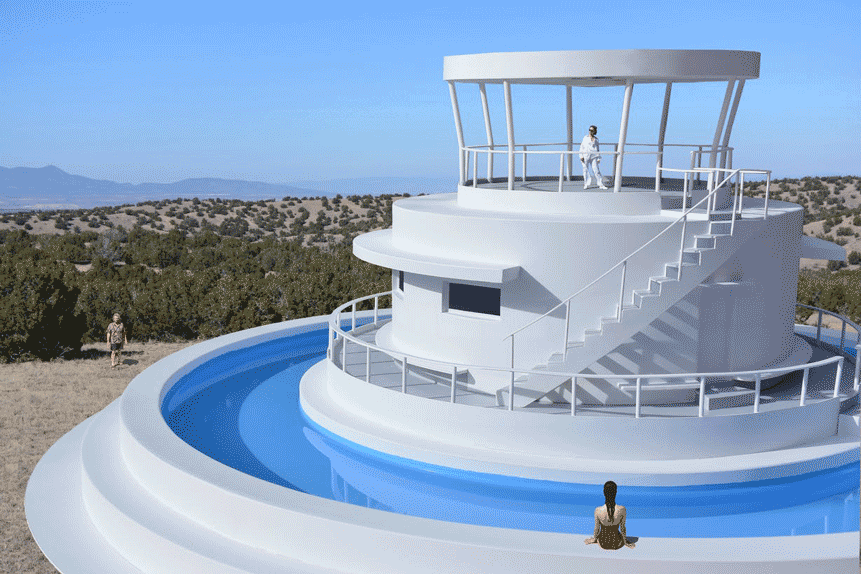
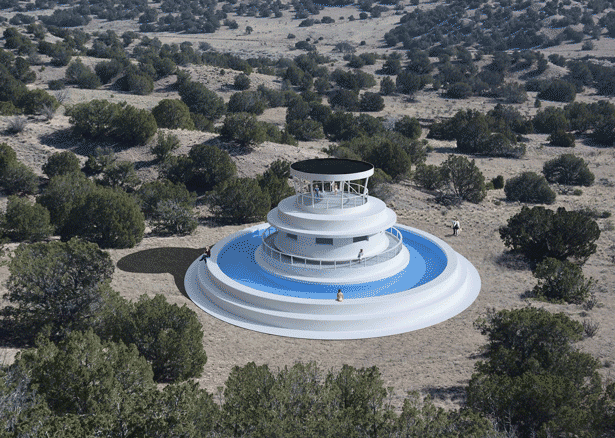
Jantzen’s proposal for Eco-Seed Sowing Machines is a symbolic public art response to environmental degradation. The machines are solar driven devices that hold a large volume of flower seeds. If proof of environmental destruction is detected, a warning is transmitted to several systems, and a small volume of flower seed is immediately distributed to the earth below. Each machine would be equipped with communication devices that receive information through an internet connection. The information is tracked by organizations such as Earth Watch, who scan the world for evidence of environmental degradation. The Eco-Seed Sowing Machines are inspired by Jantzen’s concern for the continuing devastation of the Earth triggered by the naive and deliberate destruction by humans. It was designed to reflect the connection between everything and everyone on the planet.
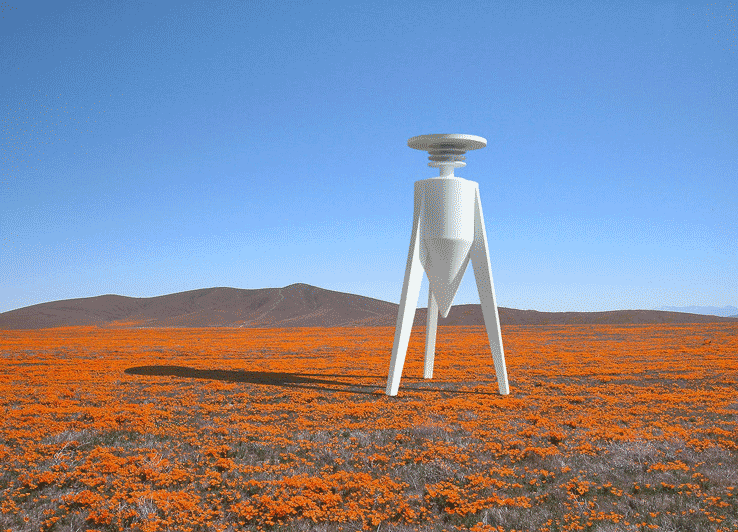
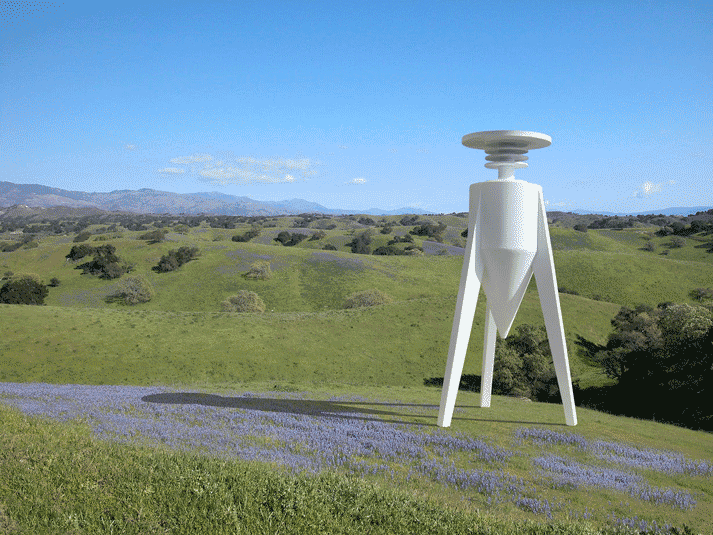
Jantzen’s environmentally sustainable designs are a product of the future. His installations offer a new outlook on the world where architecture and preservation go hand-in-hand. His work highlights the potential of public art in increasing sustainability awareness and examines ways in which a degree of sustainable design versatility can be implemented into the architectural industry at a potentially low cost.
For more information on Michael Jantzen’s work visit: http://www.michaeljantzen.com/
